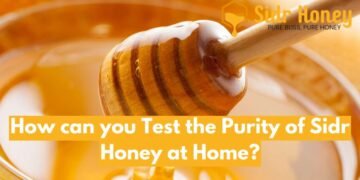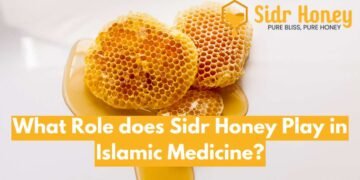Honeybees play a crucial role in maintaining our ecosystem, responsible for pollinating about a third of the food we eat. While their sweet honey is a well-known product, honeybees are also fascinating creatures with a complex social structure and a captivating life cycle. Let’s explore the world of honeybees, from their life stages to their roles within the hive, and the intricate social dynamics that underpin honey production.
From Egg to Adult: A Honeybee’s Life Cycle
The life cycle of a honeybee is a journey from a tiny egg to a bustling adult bee, defined by remarkable changes. This transformation takes place entirely within the hive, in just a few weeks:
- The Egg Stage (3 days):
The queen bee, the sole reproducer of the hive, lays thousands of eggs daily in the honeycomb’s wax cells. Whether these eggs are fertilized determines the bee’s sex: fertilized eggs will become female worker bees or potential queens, while unfertilized eggs will develop into male drones.
- The Larval Stage (6 days):
After three days, each egg hatches into a small, legless, blind larva. At this stage, nurse bees feed the larvae a special diet of royal jelly, pollen, and honey. The quantity and quality of food influence the larva’s destiny; worker bee larvae receive less royal jelly and develop over a shorter period than those destined to be queens.
- The Pupa Stage (12-16 days):
When the larva reaches maturity, it spins a cocoon and enters the pupal stage. Within this protective casing, the larva undergoes a dramatic transformation, developing into an adult bee with wings, legs, and fully-formed eyes. The length of the pupal stage varies depending on whether the bee will become a worker, queen, or drone.
- The Adult Stage (Variable Lifespan):
Emerging from its cocoon, the adult bee begins its life in the hive. Young worker bees initially take on tasks such as cleaning cells, caring for the brood, and producing royal jelly. As they age, they progress to roles like building the comb, foraging for nectar and pollen, defending the hive, and producing honey. Worker bees generally live for about six weeks during the busy summer months but can live longer in winter. Drones, however, live solely to mate with the queen and die soon after. In contrast, a queen bee can live for several years, continuously laying eggs to sustain the colony.
Honeybees are more than just honey producers; their lives showcase a fascinating example of social organization and natural adaptability. From their vital role in pollination to their complex life cycle, honeybees are indispensable to our ecosystem and a testament to the wonders of nature.
Discover the cultural heritage and the unique qualities of Sidr honey produced through this intricate process.
The Hive Community: A Buzzing Symphony of Cooperation
A honeybee colony is a marvel of social organization, thriving on a well-defined division of labor rather than a typical hierarchical structure. Within this buzzing community, each bee plays a crucial role to ensure the hive’s success. The hive’s social structure is composed of three distinct types of bees, each contributing uniquely to the colony’s thriving environment.
- Worker Bees: The Foundation of the Hive
Worker bees form the backbone of the hive, making up to 80,000 of the hive’s inhabitants. These female bees are all sisters, sharing the same mother—the queen—but having different fathers. Though they do not reproduce, worker bees dedicate their entire lives to maintaining and supporting the hive. Interestingly, their responsibilities evolve as they age, showcasing remarkable flexibility:
Learn more about the benefits of Sidr honey and how it’s a staple in various DIY beauty treatments.
- Young Worker Bees (1-2 weeks old): At the start of their lives, these bees focus on caring for the hive’s youngest members. They clean cells, feed larvae with royal jelly, and help regulate the hive’s temperature and humidity.
- Middle-aged Worker Bees (2-3 weeks old): As they grow, these bees transition to roles inside the hive. They build honeycomb cells from wax, store and process honey, and even guard the hive entrance to ensure its security.
- Older Worker Bees (over 3 weeks old): The more experienced bees take on the critical role of foraging. They venture outside the hive to collect nectar, pollen, water, and propolis—essential resources that keep the hive thriving.
- Drones: The Sole Breeders
- The Queen Bee: The Heart of the Colony
The queen bee is the central figure of the hive, responsible for laying thousands of eggs each day. She is the mother of all the bees in the hive, and her presence is vital for the colony’s continuity. Her primary function is reproduction, and she ensures the population remains robust. A healthy queen can lay both fertilized and unfertilized eggs, maintaining the delicate balance of the hive’s social structure.
Conclusion
The intricate and harmonious society of a honeybee hive is a testament to the power of cooperation and specialization. From the tireless worker bees to the singular focus of the drones, each member plays a vital role in the colony’s success. Understanding these dynamics offers a glimpse into the fascinating world of bees and highlights the importance of protecting and preserving these incredible insects for the future. As we marvel at their complex social structure, let us also be inspired to support the ecosystems that sustain them.
For more information on the best Sidr honey and Yemeni Sidr honey to click here.









